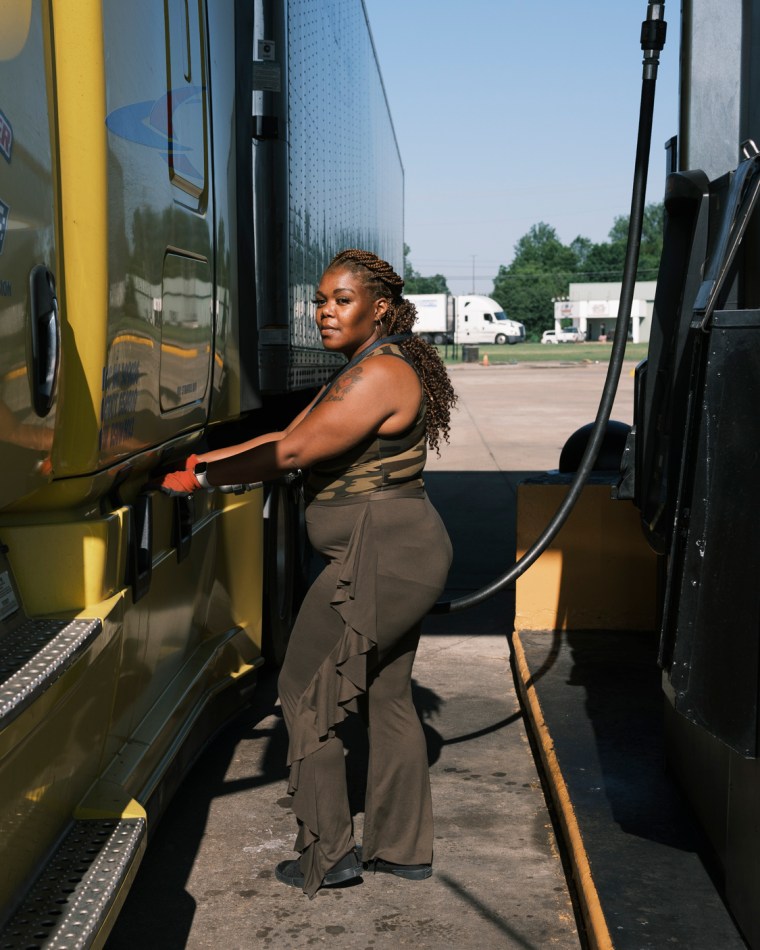WASHINGTON — In the midst of the Covid pandemic, with consumers buying up goods for their lockdown lifestyles and supply chains snarled, Arnesha Barron saw a moment to make her dream of starting her own trucking company come true.
The 39-year-old single mother of three teenagers had worked for six years driving a semitruck across the country as an employee of a trucking company. But in 2021, as shipping rates surged, she decided to strike out on her own. She took out a loan for a new $175,000 truck and was soon taking home as much as $20,000 a month in profit.
“It was amazing. I was a teen parent. I had my first child at 15 and all the odds were against me,” Barron said. “I had all three of my children graduate from high school while I was in a truck and I still made it happen.”
But like thousands of other truck drivers across the country, Barron’s fortunes didn’t last long. Over the past year, shipping rates have tumbled, leaving her and other drivers who bet big on the trucking boom struggling to make a living.
The number of trucking companies, many consisting of just a single truck and driver, increased by 50% between the start of the pandemic and the end of last year, with workers lured to the industry by record pay from companies desperate to move their goods and social media influencers promoting trucking as a way to get rich quick, said Todd Spencer, president of the Owner-Operator Independent Drivers Association. But as consumer spending has eased over the past year and the volume of goods needing to be shipped has returned to pre-pandemic levels, there is less demand for all those drivers — creating competition that has driven down shipping rates.
“Basically, the good times have come and gone,” said Spencer. “There’s a shakeout in the works right now, and it’s more than likely going to continue throughout this year.”
As shipping rates have fallen, a growing number of drivers have found themselves unable to keep operating, with 15,000 trucking companies shutting down their operations since October 2022, the majority being owner-operators with just one truck, said Dean Croke, principal analyst for DAT, a trucking logistics and analytics firm. He estimates another 2,000 carriers may have to leave the market before the supply of drivers meets the demand.
Barron said she went from making $20,000 a month in profits in March 2022 to just over $3,300 a few months later in July after fuel prices surged and demand slowed. That wasn’t enough money to keep up with her family’s expenses back home, which included $2,600 in rent, along with a $1,400-a-month loan payment for her truck. In August, she surrendered her truck to the lender, losing her $4,000 down payment and having to pay a $7,000 penalty for returning the vehicle.
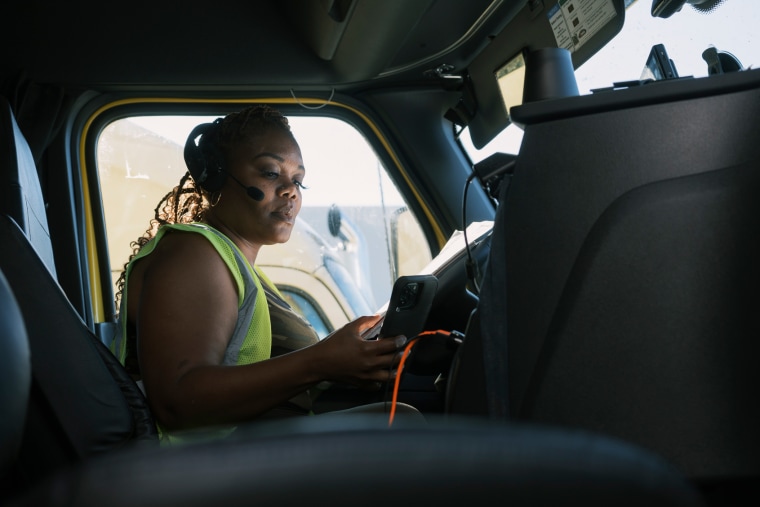
“Everything was good, but once the pandemic slowed down, there wasn’t a high demand anymore. So I couldn’t make the money that I needed to make to be able to live and then the fuel prices went up too,” said Barron.
Demand for drivers surged in late 2020 and throughout 2021 as Americans, flush with stimulus checks and unable to spend as much on travel and dining out, started ordering more goods online, from daily necessities to large items, like sofas and patio furniture. A booming housing market meant even more demand for construction materials and appliances. At the same time, logistical bottlenecks at ports and warehouses slowed down how efficiently the drivers who were on the road could move.
With the prospect of quickly making six-figure salaries, a wave of workers shifted into trucking careers during the pandemic, either as employees for a trucking company or by purchasing a truck and starting their own operation, said Rico Muhammad, who has been in the trucking industry for 20 years and hosts a podcast on the industry.
They were spurred on by TikTok and YouTube videos touting the ease of starting a trucking company and the big profits that could follow. One YouTube video posted in August 2022 with more than 3 million views features a 19-year-old who started his own trucking company and says he made $159,000 in the first three months.
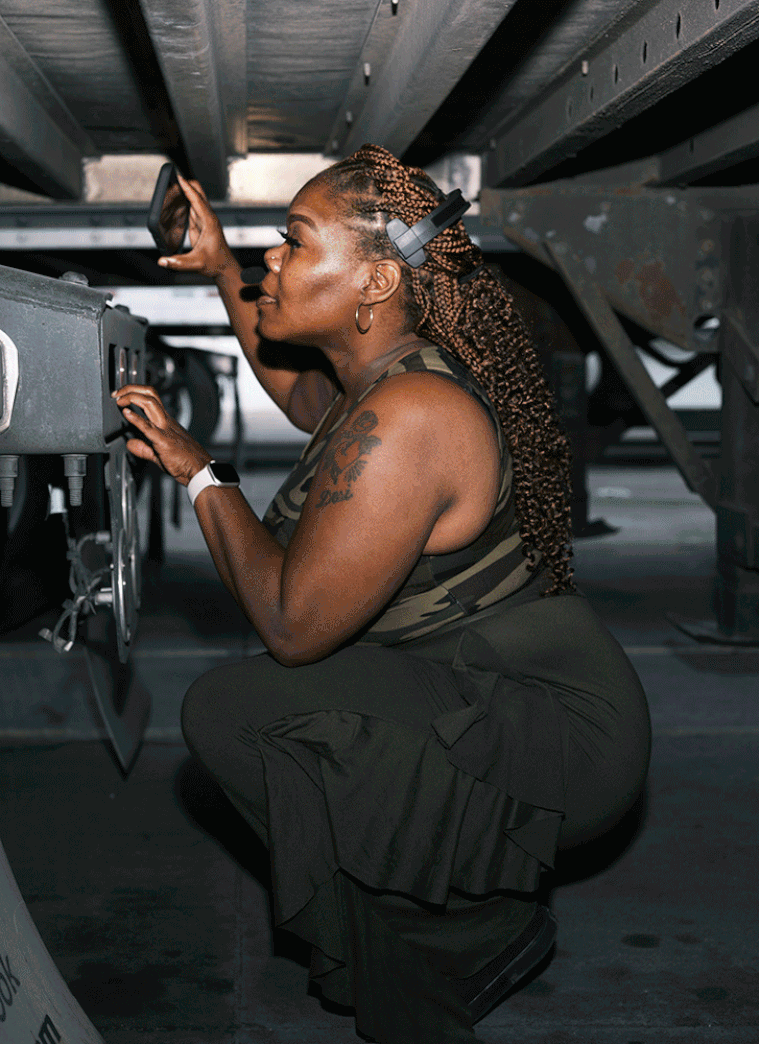
“A lot of people jumped in because of all of the hype and everything that was pushed on social media making people think that they could make some quick money,” said Muhammad. “You had a ton of people jumping into the industry, and now you have a mass exodus out of the industry of people going out of the business. It’s kind of like a culling of the herd.”
Even President Joe Biden urged Americans to consider careers in trucking, with the White House unveiling a “trucking action plan” in December 2021 to strengthen the trucking workforce and help relieve supply chain bottlenecks. Last April, Biden invited a group of truckers to the White House, with big rigs parked on the White House lawn, where he touted the more than 35,000 trucking jobs added since the start of the pandemic.
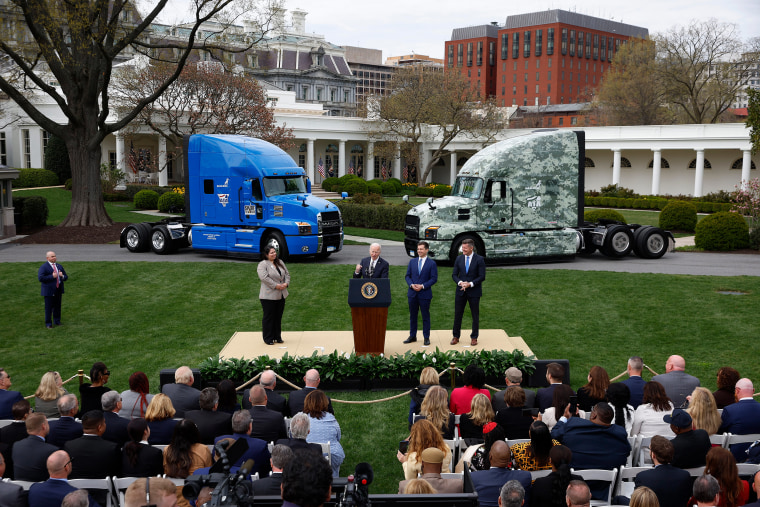
But as the number of drivers increased, the demand for them soon slowed. Consumer spending cooled as inflation squeezed household budgets and people shifted their spending to travel, entertainment and dining out rather than purchasing goods. At the same time, demand has slowed for building materials as higher interest rates have stifled new housing construction, and logjams at the ports that left drivers stuck waiting for hours for shipments have eased.
“There’s definitely more trucks than loads. It’s a simple supply and demand equation,” said Croke. “They’re hanging in there right now. But for a lot of carriers they are a major breakdown away from going out of business. This is a perilous time for a lot of carriers.”
'Praying and hoping'
Gitonna Smith, 32, was one of those who made the leap into trucking during the pandemic. Smith had been working in Atlanta nightclubs for more than four years when the pandemic hit and the club where she was working shut down. Feeling burned out from the nightclub industry and in need of work, she spent $4,000 for a three-week commercial driver course.
She immediately got a job with a trucking company and started making $2,500 a week. She said she enjoyed the travel and independence of the job and started a Facebook page and YouTube channel with videos of her truck in which she talked about the new places she had visited and chronicled her struggles, like trying to back her truck into a loading dock.
But over the past year, she saw her weekly pay drop to $1,200 as the rate she gets paid per mile by her employer has decreased and the number of jobs she is given has slowed to the point where she can go days or weeks without work.

“When I first started they’d book me for loads back to back to back to back. I’d always be running,” said Smith from her home in Atlanta, where she was waiting for her truck to get repaired — time off the road that she wasn’t getting paid for. “But now it’s to the point where they might book one load, and then I have to sit for hours until they find something else for me. It’s really bad.”
Smith said she’s planning to stick with the job at least through the end of the year because she’s able to meet her monthly expenses but is uncertain what the future holds.
“I’m praying and hoping that it gets better because I love trucking, it’s easy for me, I love to travel. So I’m just going to hang in there,” Smith said. “I’ll give it maybe to the end of the year, and we’ll go from there.”
Monica Garcia said she has given up on the industry altogether after she closed her trucking company last year and sold her trucks. She started the business in 2016 with the $30,000 pension she got when she retired as a teacher. Over time, her business grew to have three trucks with a rotation of seven to 10 drivers.
But the pressures on her company started to build with backlogs at the ports, rising fuel prices and increasing competition from a flood of new drivers in the market, along with Amazon building up its own fleet.
“When the fuel went to $5.50 a gallon that was the nail in the coffin for me. I had to shut my doors,” said Garcia, who is now working in real estate. “Between that and truck repairs, I didn’t have enough cushion. My profitability went down with the drop in rates. Then when the fuel went up and I needed to put my truck in the shop, that was it.”
'Trials and tribulations'
Many drivers get their shipments from the spot market, which is dominated by solo drivers or small firms that bid on individual jobs. But rates have plummeted, from around $1 a mile in profit in 2021 to about 3 cents a mile today, said Croke. Typically, a driver needs at least 40 cents a mile in profit to be able to build up a cash reserve for vehicle maintenance and repairs that can range in the tens of thousands of dollars, he said.
Larger trucking firms that have contracts with retailers and shippers have also seen their rates go down, though not as dramatically, and some have had to scale back the size of their fleets as demand has slowed, said Bob Costello, chief economist for the American Trucking Associations, which represents the major trucking carriers. Those companies are still having trouble finding and retaining workers though it has eased, especially as truckers who started their own companies have been forced to shut down and look for work as company drivers, said Costello.
For those who purchased equipment in the past two years and now need to sell it, they could be out tens of thousands of dollars. Prices for trucks and trailers nearly doubled in 2021 as everyone from major shippers, like Amazon and FedEx, to individual drivers started buying up more vehicles to keep up with demand, said Croke. Prices have started to come back to their pre-pandemic levels, leaving drivers underwater on their loans.
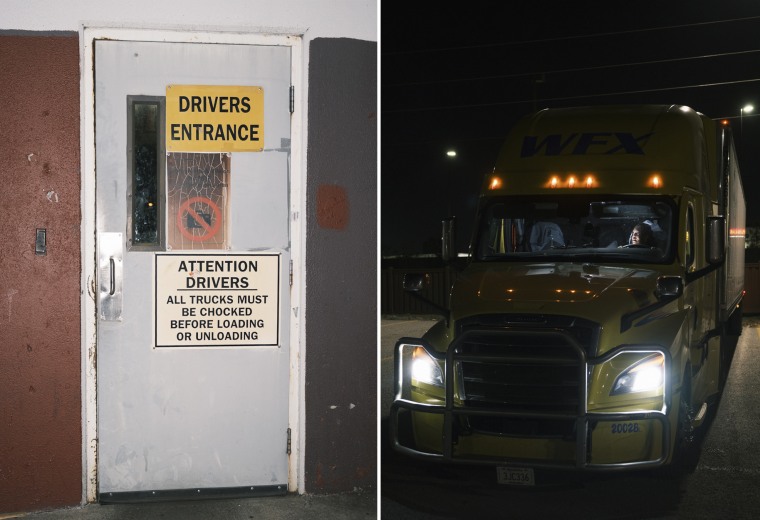
With so many drivers leaving or considering leaving the industry, Costello said he worries the country will end up once again with a significant shortage of drivers once demand returns, continuing a cycle in the industry of booms and busts.
“My concern is that when we do start to get more freight these independent contractors are going to leave to go do something else,” said Costello. “So I would fully anticipate, whether it’s next year or at some point, we could absolutely have a situation where the driver shortage that lessened could just skyrocket back to all- time highs.”
For the drivers that are still hanging on, they are hoping they can wait out the situation.
David Coates started driving in 2018 after working as a diesel mechanic and now leases a truck. He said he loved working as a trucker until recently, when he saw rates cut in half. While in the past he’d drive as many hours as he was allowed by law, he is now cutting back on how much he’s on the road because the rates aren’t worth the time away from home.
He said he can’t see a future for himself in another career, so for now he’s hoping more drivers leave the market and rates begin to rise again.
“The thing that might change this is if there is a trucking purge where, basically, all these new companies go out of business and things start to balance out,” he said as he was driving from Wisconsin to Chicago to pick up a load on his way back home to Houston. “A lot of companies have to go out of business.”

For Barron, she’s also hoping to stick with trucking. After losing her truck in August and leasing a truck in April that she hopes to eventually own, she’s back to making enough to cover her monthly expenses.
“I’m thankful for all the trials and tribulations because they don’t do nothing but make me grow,” said Barron as she drove her truck across Arizona. “It opened my eyes to see the world in different hands. Never be comfortable because things can change for you, just like that.”
